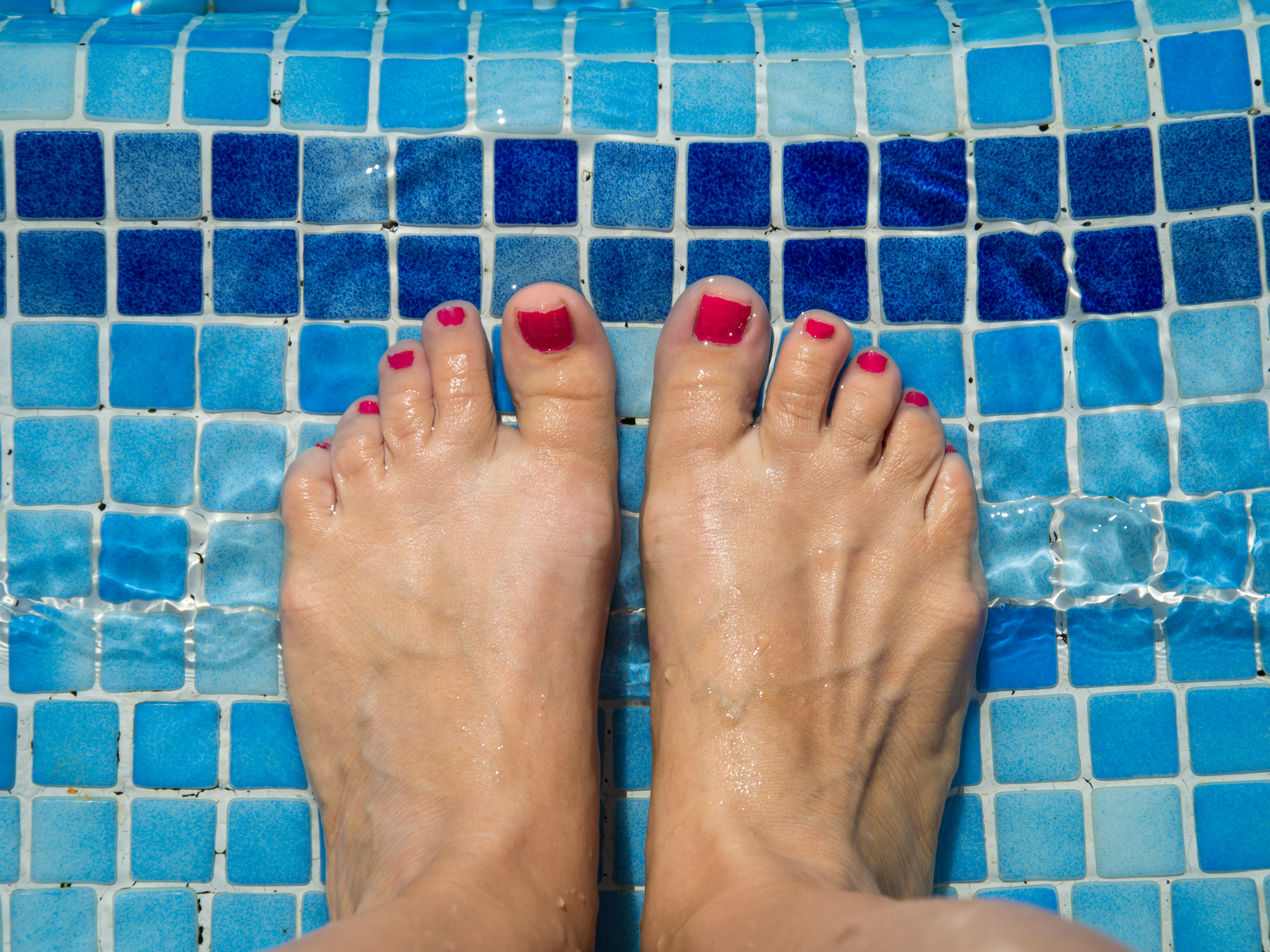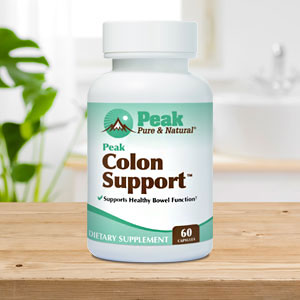Get Easy Health Digest™ in your inbox and don’t miss a thing when you subscribe today. Plus, get the free bonus report, Mother Nature’s Tips, Tricks and Remedies for Cholesterol, Blood Pressure & Blood Sugar as my way of saying welcome to the community!
Tips to treat and avoid the fungus among us

We all have yeast on our skin, and for the most part, we never know it’s there…
But when we do, it’s quite annoying, itchy and uncomfortable. Some can be downright deadly. So how can you avoid a yeast or fungal infection?
First, you need to understand how they develop. Yeast (single cells) will proliferate into a fungal (long chains of yeast) skin rash when you have excessive and localized skin moisture or sweating. That’s why you see more fungal infections occurring during the hot and humid summer months, especially ringworm, jock itch and athlete’s foot.
With summer practically here you may need to take extra steps to keep problem areas dry. Don’t hang out in a wet bathing suit longer than needed, and don’t forget to dry all the nooks and crannies well after bathing.
But there are a few other things that increase your risk for a fungal infection, including:
- An imbalance in your skin’s pH level due to something you are eating, medication you are taking or excessive stressors (mental, emotional, physical)
- Consuming high amounts of simple carbohydrates (refined sugar feeds yeast)
- A repeated mechanical skin injury (e.g. chaffing, rubbing)
- A food sensitivity (e.g. gluten in wheat, rye, spelt, triticale)
- A sensitivity to something your skin is coming in contact with, like a topical ingredient (lotions, soap, perfume, cleansers, etc.)
There’s also some misunderstanding surrounding some fungal infections. Hopefully, you already know that “ringworm” (tinea corporis) is definitely not a worm; it’s just a common fungal infection that manifests as a pink, itchy, circular rash on your trunk or extremity skin. There is one other common “tinea” called pityriasis versicolor that also affects the skin.
Other body areas that are common places for fungal infections include feet (athlete’s foot), the groin (jock itch), scalp/beard area (tinea capitis/barbae), the vagina (yeast), mouth (thrush) and nails (onychomycosis).
Fortunately, skin fungal infections are easy to diagnose and treat…
Treatment for fungal infections
Skin and nail fungal infections come in about 40 species. The most common ones are Trichophyton, Microsporum, and Epidermophyton which are easy to detect and treat.
Prescription treatment is pretty simple:
- Skin areas: Nizoral (ketoconazole) 2% cream applied twice daily for 2 weeks
- Nails: Lamisil (terbinafine) 250 mg pill taken daily for 3 months
- Mouth: nystatin oral suspension several times daily for 1-2 weeks
- Vagina: Diflucan (fluconazole) 150 mg pill taken every other day for 3 days
- Pityriasis Versicolor, typically on the trunk of the body or shoulders: topical selenium sulfide, ketoconazole, or pyrithione zinc
But if you’d prefer to try the natural route before resorting to pharmaceuticals, apple cider vinegar has a strong reputation as a fungal eradicator because of its antimicrobial properties. It’s mildly acidic, so depending on where your infection is, you might want to do a dab test first to test for skin sensitivity. You can dilute it a little with water, but of course that could cut down on its effectiveness. To be effective you would need to apply apple cider vinegar at least three times a day for several days.
Other natural remedies reported to be effective against fungal infections include plain yogurt, coconut oil and some essential oils such as tea tree oil, olive leaf extract and lavender oil.
Systemic infections
Most often, fungal infections are localized, affecting a specific body part or area. But a systemic infection is one that may affect many areas of the body, including internal organs and systems. Candida albicans, the yeast most commonly found on (and in) humans, has proven to be especially dangerous in this respect.
Candida albicans is an opportunistic pathogen that is the 4th leading cause of hospital-acquired infections. In this environment, it can become a serious infection of the blood, heart, brain, eyes, bones, etc. In this context, candidemia (candida in the bloodstream) is a life-threatening infection and commonly results in costly, long hospital stays with poor outcomes. For example, among 529 infected patients, death attributable to candidemia ranged between 19% and 24%. Treatment consists of aggressive IV antifungal medications and close monitoring.
Some common medications can upset your body’s pH and make your body ripe for candida to flourish, most notably broad-spectrum antibiotics and oral corticosteroids. An overabundance of sugar in your diet can also be problematic, leading to chronic candida.
Chronic candida is a similar infection, in that its symptoms are systematic. But while certainly capable of dragging your health down and being responsible for myriad non-descript symptoms, it’s not often as severe, though recent research may link chronic candida with schizophrenia.
Chronic candida usually begins when candida overproduces in the digestive tract where it breaks down the intestinal lining so that large proteins can abnormally penetrate your bloodstream (this is known as Leaky Gut). This is mainly due to chronic unhealthy foods (refined sugars), medications (antibiotics, corticosteroids), diabetes or a weakened immune system. Any of these factors contribute to an environment perfect for candida to overpopulate.
Symptoms may be as simple as sugar cravings or new food sensitivities to dairy, eggs, corn or gluten. Or they may be more specific such as fatigue, mood disorder, recurring sinus or urinary infections, IBS or “brain fog.”
Treatment consists of a 3-7 day “candida cleanse.” This cleanse consists of:
- The “candida diet”: Eliminate simple sugar and foods that are rapidly broken down into sugars. Avoid gluten. Also avoid fermented foods because most are yeast-containing and you are trying to cut down on an overgrowth. Once the gut is in balance, fermented foods may slowly be reintroduced if tolerated.
- Probiotic supplementation.
- Bentonite clay, to bind and remove intestinal toxins.
- Coconut oil, clove, or oregano oil supplementation.
- Milk thistle, to boost liver detoxification.
Editor’s note: Did you know that when you take your body from acid to alkaline you can boost your energy, lose weight, soothe digestion, avoid illness and achieve wellness? Click here to discover The Alkaline Secret to Ultimate Vitality and revive your life today!
Sources:
-
Definition of Ringworm — Centers for Disease Control and Prevention
-
Morgan J, Meltzer MI, Plikaytis BD, Sofair AN, Huie-White S, Wilcox S, et al. “Excess mortality, hospital stay, and cost due to candidemia: a case-control study using data from population-based candidemia surveillance.” — Infect Control Hosp Epidemiol 2005 Jun;26(6):540-7.
-
Manos NE, Ferebee SH, Kerschbaum WF. “Geographic variation in the prevalence of histoplasmin sensitivity.” — Dis chest. 1956 Jun;29(6):649-68.














